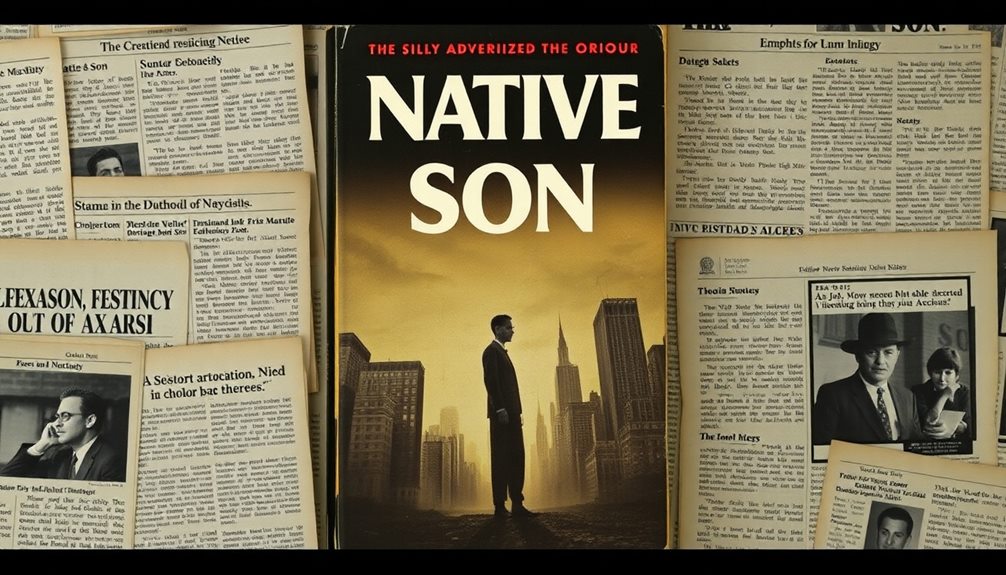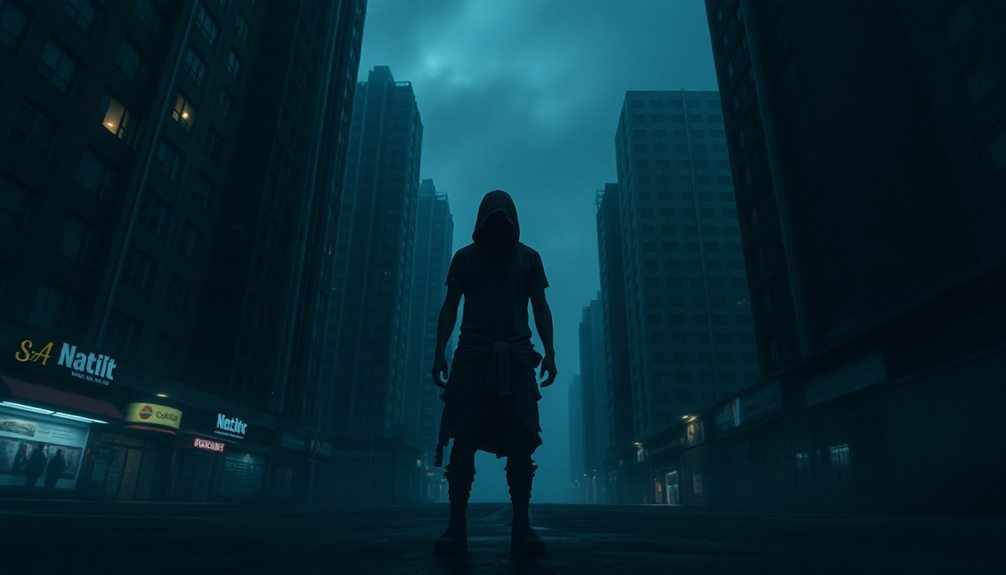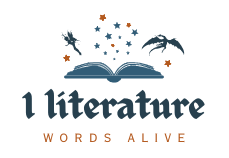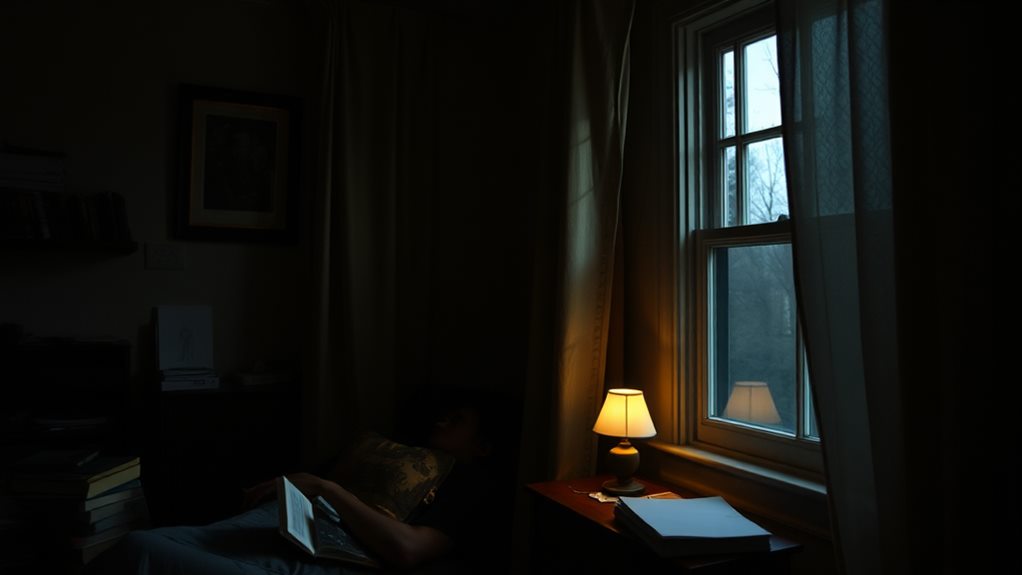"Native Son" is Richard Wright's landmark novel that dives deep into the brutal realities of systemic racism and black identity through the life of Bigger Thomas in 1930s Chicago. You'll witness Bigger's struggle with poverty and societal oppression, leading to tragic choices that highlight his alienation and despair. The novel is divided into three parts—"Fear," "Flight," and "Fate"—each illustrating the escalating consequences of his actions. It's a gripping narrative that challenges perceptions and ignites discussions about race and justice. You'll discover how this influential work has shaped conversations about identity and oppression, revealing layers you won't want to miss.
Overview of Native Son
"Native Son," a pivotal work by Richard Wright, explores deep into the complexities of systemic racism and its impact on black identity through the life of Bigger Thomas. Set in 1930s Chicago, this groundbreaking novel is a powerful commentary on racial oppression faced by African Americans.
Wright vividly portrays Bigger's psychological turmoil as he navigates a society designed to dehumanize him, reflecting the dehumanizing effects of racism that shape his identity and actions.
Released in 1940, "Native Son" quickly made waves, selling over 250,000 copies within three weeks and becoming the first African American book featured by the Book-of-the-Month Club.
The narrative is divided into three distinct parts: "Fear," "Flight," and "Fate," each illustrating the escalating consequences of Bigger's actions, culminating in a shocking murder that forces readers to confront uncomfortable truths about race relations.
Wright's exploration goes beyond mere storytelling; it challenges you to reflect on the societal structures that perpetuate systemic racism.
The novel's impact extends beyond literature, inspiring adaptations, including a Broadway play directed by Orson Welles.
As you investigate "Native Son," you'll uncover the profound themes that continue to resonate in today's discussions about race and identity.
Detailed Plot Summary
Often, readers find themselves drawn into the intense and harrowing journey of Bigger Thomas in Richard Wright's "Native Son." The narrative unfolds in three parts, starting with Book One: "Fear," where you witness Bigger's struggles with poverty and the suffocating weight of systemic racism in 1930s Chicago, echoing themes similar to those explored by Ta-Nehisi Coates in his work about the impact of systemic oppression on marginalized communities.
One fateful night, after a panic attack, he accidentally commits murder when he kills Mary Dalton, a white woman, during a moment of chaos, reflecting the historical injustices that shape the lives of Black individuals in America, as discussed in Coates' profound insights.
In Book Two: "Flight," you follow Bigger's desperate attempts to cover up the crime. He fabricates a kidnapping note and tragically kills his girlfriend, Bessie, to eliminate her as a witness. This decision plunges him further into a cycle of violence and despair.
Key Themes Explored

In "Native Son," you'll see how systemic racism profoundly impacts Bigger Thomas and shapes his reality.
The struggles faced by Bigger parallel the experiences of individuals in historical resistance movements, where oppression led to feelings of powerlessness and frustration.
His feelings of isolation and alienation from both the black and white communities highlight the emotional toll of living in a divided society.
As you explore these themes, you'll understand how violence emerges as a desperate response to oppression and frustration, reminiscent of the acts of courage and defiance exhibited by those who resisted tyranny.
Systemic Racism's Impact
Systemic racism plays a critical role in shaping the experiences of characters in Richard Wright's 'Native Son,' particularly through the life of Bigger Thomas. You see how systemic racism dehumanizes him, stripping away his agency in a society that enforces oppression and economic disparity.
Bigger's psychological impact is profound; he grapples with feelings of fear and isolation that drive him to make tragic choices. His struggle for racial identity highlights the ways systemic racism distorts self-perception and limits potential.
Characters like Mrs. Dalton represent societal blindness, believing they're benevolent while ignoring the systemic inequalities that perpetuate Bigger's plight. This ignorance only deepens Bigger's sense of entrapment, fueling his desperation.
The intersection of race and poverty becomes painfully clear, illustrating how economic hardship exacerbates his isolation and feelings of powerlessness.
Ultimately, Wright shows that the oppressive structures of systemic racism not only shape individual destinies but also reflect a broader societal failure to acknowledge and address the roots of racial injustice. Your understanding of Bigger's life reveals the tragic consequences of living in a world where systemic racism holds sway.
Isolation and Alienation
Isolation and alienation permeate the narrative of "Native Son," profoundly affecting Bigger Thomas's existence. He feels disconnected not only from the oppressive white society but also from his own black community, leading to a deep sense of loneliness. Bigger's relationships, especially with Bessie and his family, are plagued by emotional distance, which highlights his inability to connect due to societal pressures and personal fears.
The oppressive environment of 1930s Chicago exacerbates his alienation, as systemic racism and poverty trap him in a cycle of despair. This situation leaves him feeling powerless and frustrated, further isolating him from those around him. Bigger struggles with his identity as a black man in a racially biased society, which magnifies his sense of isolation and despair.
The climax of this alienation becomes stark when Bigger murders Bessie, eliminating a witness to his actions. This tragic moment underscores how his desperate choices stem from profound isolation, ultimately leading to his estrangement from humanity.
In "Native Son," Bigger Thomas embodies the devastating effects of isolation and alienation in a world that offers little hope for connection or escape.
Violence as Resistance
Amid the oppressive landscape of 1930s Chicago, violence emerges as a stark form of resistance for Bigger Thomas in "Native Son." His actions, driven by desperation and fear, reflect an internal struggle against the societal constraints and racial dehumanization that suffocate him. The accidental murder of Mary Dalton becomes a catalyst for Bigger's violent rebellion, showcasing how his misguided assertion of agency stems from a deep sense of alienation and systemic oppression.
Wright illustrates that violence isn't merely a personal failing; it's a response to the broader societal violence inflicted on black individuals. The psychological toll of racism and poverty weighs heavily on Bigger, pushing him toward explosive outbursts that symbolize his lack of legitimate avenues for empowerment. Each act of aggression signifies a desperate attempt to reclaim some sense of control in a world that systematically devalues his existence.
Ultimately, the narrative critiques the cycle of violence perpetuated by systemic racism, suggesting that societal structures force marginalized individuals like Bigger into violent acts as a means of survival. This stark portrayal underscores how violence, while destructive, is also a profound form of resistance against the constraints of a dehumanizing environment.
Character Analysis
How do the characters in "Native Son" illustrate the complexities of race and identity in a racially charged society? Richard Wright crafts Bigger Thomas as a poignant symbol of systemic racism and poverty, showcasing how his profound alienation drives him to violence. This alienation is deeply rooted in Wright's own experiences growing up in a racially charged South, which shaped his worldview and literary voice.
Bigger's interactions with Mary Dalton reveal the tragic consequences of racial dynamics; her fleeting attempt to connect with him only underscores the barriers imposed by society. Mrs. Dalton, representing racial blindness, genuinely believes in her efforts to help the black community yet remains oblivious to the impact of her privilege.
Jan Erlone, Mary's boyfriend, tries to engage with Bigger as an equal, but his well-meaning intentions fall short, illustrating the limitations of understanding in a racially divided world. Meanwhile, Bessie Mears, Bigger's girlfriend, embodies vulnerability and becomes a tragic victim of his desperation, reflecting how systemic oppression destroys personal relationships.
Each character embodies a facet of the societal issues at play, revealing how race and identity intertwine in a world fraught with misunderstanding and prejudice. In "Native Son," Wright invites you to confront these complexities through the lives of his profoundly flawed characters.
Through these narratives, Wright's commitment to social justice becomes evident, as he challenges the status quo and inspires future generations to engage with the struggles of marginalized communities.
Critical Reception

Although "Native Son" quickly became a bestseller, selling 250,000 copies within three weeks of its release in 1940, its reception was far from universally positive. Critics had mixed feelings about Richard Wright's portrayal of Bigger Thomas and the themes he explored. Some noted parallels between the struggles of characters in Wright's work and those in other significant literature, such as the resilience depicted in Liesel's spirit.
Here are four key points regarding its critical reception:
- Reinforcement of Negative Stereotypes: Some, like James Baldwin, argued that the novel could reinforce harmful stereotypes of black individuals.
- Systemic Racism and Psychological Effects: Wright's work sparked significant discussions on race relations and highlighted the psychological effects of systemic racism in America.
- Censorship Challenges: The book faced censorship challenges, ranking as the 71st most frequently challenged book from 1990 to 2000 due to its graphic content.
- Transformative Impact: Despite criticisms, "Native Son" was recognized as a transformative work that reshaped American literature and influenced future writers and activists.
The mixture of acclaim and criticism surrounding "Native Son" showcases its complexity and its role in igniting vital conversations about race and identity in literature.
Richard Wright's Background
Richard Wright's upbringing played a pivotal role in shaping his literary voice and perspective. Born on September 4, 1908, in Mississippi, he faced profound poverty and family instability. His father's abandonment and mother's illness left a significant mark on him, and he spent part of his childhood in an orphanage. This experience fueled his desire for education and a deeper understanding of the world, especially regarding race and identity.
In 1927, Wright moved to Chicago, immersing himself in literary circles and joining the John Reed Club. Here, he found a platform to explore social justice themes, which would later influence characters like Bigger Thomas in his landmark novel "Native Son."
His early work, "Uncle Tom's Children," published in 1938, tackled the brutal realities black Americans faced, reflecting his commitment to addressing race and oppression.
Wright's complex views on identity and social justice also stemmed from his initial flirtation with Communism. Throughout his literary career, he continuously challenged various ideologies, showcasing the intricate relationship between race, poverty, and the quest for equality in America.
Literary Significance

"Native Son" stands as a monumental achievement in American literature, reshaping the landscape of discussions around race and identity. Its profound exploration of Bigger Thomas's life highlights critical themes that resonate deeply in today's society, much like the exploration of historical injustices in medical research, particularly against African Americans found in Henrietta Lacks' complex legacy.
- It was the first African American novel featured by the Book of the Month Club.
- The novel sold 250,000 copies within three weeks of its release in 1940.
- It has been included in numerous best books lists, solidifying its place in literary history.
- Its adaptation into a Broadway play shortly after publication underscores its immediate relevance.
Richard Wright's raw portrayal of racial injustice and systemic oppression is a catalyst for change, shifting perceptions from historical legacies to ongoing societal challenges.
The themes of identity, violence, and alienation within a racially divided society are intricately woven throughout the narrative, making it essential reading for anyone interested in social justice.
Wright's work continues to inspire generations of writers and activists, contributing considerably to the dialogue around confronting racial inequalities.
Cultural Impact
Amid the turbulent social landscape of the 20th century, "Native Son" emerged as a powerful catalyst for change, shaping cultural conversations about race and identity in America. Richard Wright's portrayal of Bigger Thomas exposed the harsh realities of racial injustice and systemic oppression, resonating with countless readers and prompting urgent discussions about the American Dream's inaccessibility for marginalized communities.
This resonates deeply with systemic discrimination that continues to fuel racial, gender, and socioeconomic inequalities. As a groundbreaking bestseller, selling over 250,000 copies within three weeks, "Native Son" established a new standard for African American literature. It gave voice to struggles that many faced and encouraged future authors to address race candidly while challenging existing stereotypes.
The novel's cultural impact continues to echo in contemporary movements, including Black Lives Matter, highlighting ongoing battles for racial equality.
Through its themes of despair and hope, "Native Son" remains relevant today. It serves as a reminder of the systemic issues that persist in society.
Adaptations and Influence

Now that you've explored the cultural impact of "Native Son," it's important to reflect on its adaptations and influence on literature.
The novel's journey from page to stage and screen reveals how its themes resonate across generations. Much like the stories of survival and resilience highlighted in works such as *The Immortal Life of Henrietta Lacks*, Wright's narrative offers profound insights into the complexities of race and identity.
This exploration of marginalized voices continues to shape contemporary discussions about societal issues, emphasizing the ethical implications of medical research.
You'll see how it inspired countless authors and shaped conversations about race and identity in America.
Film Adaptations Overview
Richard Wright's "Native Son" has inspired a variety of film adaptations that seek to capture its profound themes and complex characters. These adaptations highlight the story of Bigger Thomas and explore issues of identity, systemic racism, and societal critique.
Here are some notable adaptations:
- The 1951 film directed by Pierre Chenal, one of the earliest adaptations, aimed to capture the essence of Wright's novel.
- In 1986, a television film produced by the American Film Theatre featured a screenplay penned by Wright himself, aiming for fidelity to the source material.
- The 2019 adaptation by Rashid Johnson offers a contemporary retelling, recontextualizing Bigger's struggles within today's societal landscape.
- Each adaptation faced challenges in conveying the novel's complex themes, particularly in representing Bigger's psychological depth.
Despite varying degrees of success, these film adaptations reveal the enduring legacy of "Native Son." They spark discussions about race, identity, and justice in America, demonstrating how Richard Wright's work continues to resonate with filmmakers and audiences alike.
Literary Influence and Legacy
Many readers and scholars recognize "Native Son" as a seminal work that has left an indelible mark on American literature. Richard Wright's portrayal of Bigger Thomas confronts systemic racism and racial injustice, making it impossible to ignore the psychological effects these issues have on individuals and communities.
The novel's cultural impact extends beyond its pages, influencing writers and filmmakers alike in their exploration of identity and oppression. Adapted into a Broadway play by Orson Welles in 1941, "Native Son" further popularized its themes and characters, ensuring its relevance in discussions about race.
Its inclusion in university curricula across the United States emphasizes its academic significance, serving as an essential text for understanding the complexities of systemic racism. Wright's legacy continues to resonate as subsequent generations of authors draw inspiration from Bigger Thomas's complex character.
The novel is often cited in conversations about the evolution of African American literary expression, highlighting its enduring relevance in contemporary society. Ultimately, "Native Son" not only reflects the struggles of its time but also challenges you to engage with the ongoing conversations about race and identity in America.
Conclusion
In "Native Son," you witness the stark contrast between hope and despair, freedom and confinement. Richard Wright masterfully captures the struggle of a young Black man in a world that dehumanizes him, forcing you to confront uncomfortable truths about society. As you reflect on Bigger Thomas's journey, you can't help but feel the weight of systemic oppression while recognizing the flickers of resilience within. This novel isn't just a story—it's a mirror reflecting our collective conscience.



